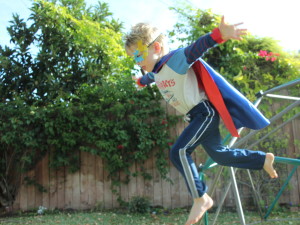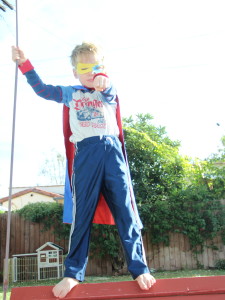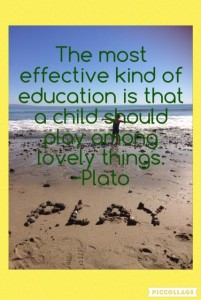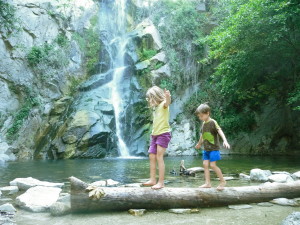
Logic can get you from A to Z; Creativity will get you everywhere!
~ Albert Einstein
This is a true story and a wake up call to anybody raising and educating children. Imagine a class of 6 year olds. Their acting assignment is to improvise using a scarf. One by one they take a turn, unable to imagine anything but items that can be made out of a scarf. No magic wands, no snakes, no swords are created. The students seem uncomfortable and unsure.
Why is it so hard for them to do what was second nature to previous generations? An explanation might be found in the way children spend their days. They are in school, or after school care, from 8 am to 6pm. During this time their activities are highly structured. They are told what to do and when to do it. No room for imaginative play. When they get home they have to finish their homework, maybe play on a device, and then it is bedtime.

These days, there seems to be no time to ride their bikes, play in their yards, or to just a kid. Every minute seems structured and supervised. Children seem bored and disinterested in even the most exciting activities offered to them. Every minute is used to squeeze in one more enrichment activity.
Imagination is the beginning of any endeavor. Without imaginations there is no growth in a society. Steve Jobs had to imagine the apple computer before it could become a reality. Thomas Edison imagined the electrical light bulb before he spend ten thousand experiments to actually create one. Our Founding Fathers imagined a free America before the Declaration of Independence was signed.
Imagination is a skill that needs to be valued. A child playing by themselves is doing the work of childhood. Your little daydreamer might make all the difference in the world one day.
What do we value more, spelling skills or imagination? Most would probably answer imagination. Yet we spend all our resources and efforts on spelling and other skills like it.
Our children’s need for imaginative play needs to be defended. They need opportunity to play and caregivers need to be patient.
When your children come to you and tell you they are bored. Don’t just create entertainment for them, let them create it themselves. Build areas of unstructured playtime into a child’s day. At school as well as at home. There should be learning breaks where children can relax their bodies and minds. Imagination is the foundation of what it means to be human. It is up to all of us to bring it back to live. Bring back the unicorns, pirates, and joys of imaginative play.



